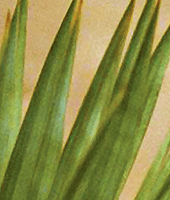Cultivated Versus Wildcrafted Herbs
The eco-pressure is on, as pygeum, goldenseal and otherpopular herbs are at risk of becoming endangered species in the wild.

The Issue
With herbal awareness winding its way into "mainstream" North American health, a unique set of problems is occurring. By collecting many of our herbs from the wild, we are causing new ecological problems.
The increase in herbal products and stiff competition between herbal companies means we are using more plant resources. Furthermore, other countries with strong traditions of herbal healing are experiencing a severe
shortage of medicinal plants and are looking to North America for a supply of these herbs. This increased usage, along with habitat destruction, has resulted in an ever-increasing shortage of plant resources, including some of our most treasured medicinal species.
Evidence
Thirty-four thousand plant species worldwide (12 percent of all plant species) and 29 percent of North American plants are so rare they may easily disappear. The most directly attributable cause is the loss of habitat from urban sprawl and deforestation. With tremendous growth of the
herbal industry, both at home and abroad, this pressure is directed heavily at the medicinal plants. In Third World countries, more than 80 percent of the world's skyrocketing population uses herbal medicine as the primary form of health care. In North America, herbal remedies now exceed $5 billion US in sales annually, whereas worldwide sales are in excess of $20 billion US.
Today more than 2,500 acres of raw land are disturbed every day, transformed into shopping malls, housing developments or factories. We are speedily losing native land to grow wild herbs, thus diluting the gene pool of wild stocks. For some species, such as dandelion and plantain, no one is presently concerned, but there is an ever-growing list of popular herbs that are diminishing in availability. United Plant Savers at plantsavers.org has created a list of at-risk plants such as American ginseng, black cohosh, blue cohosh, echinacea, eyebright, goldenseal, wild yam and some 33 other species in North America alone. To learn more, you can read Planting the Future, edited by Rosemary Gladstar (Healing Art Press, 2000).
What to Do
The most important thing you can do is become aware of which medicinal herbs are experiencing pressure. These herbs should be used less in manufacturing; consumers should use them very sparingly and opt for organically cultivated products instead of wildcrafted ones. Often it is a simple matter of substituting one herb or even part of a plant with another that possesses just as strong medicinal properties. My book (see info below) also contains valuable information on the health benefits of different herbs.
Some herbs such as pygeum, a good prostate herb from Africa, have been harvested almost to extinction and are still being sold in both European and Canadian stores. There are presently a few projects cultivating pygeum, but since it is a tree that is destroyed in the harvesting process, it will take several years to produce commercial volumes. There are many alternatives to pygeum, such as saw palmetto berries (not destroyed in the harvesting process) or nettle roots (an extremely abundant "weed"). Both of these herbs have been shown to be better acting than pygeum by clinical herbalists and in scientific studies.
The Bottom Line
Do not use wildcrafted herbs that are ecologically threatened. Become more aware of which medicinal herbs are under environmental pressures and choose organically cultivated products or an alternative, less-pressured herb.




